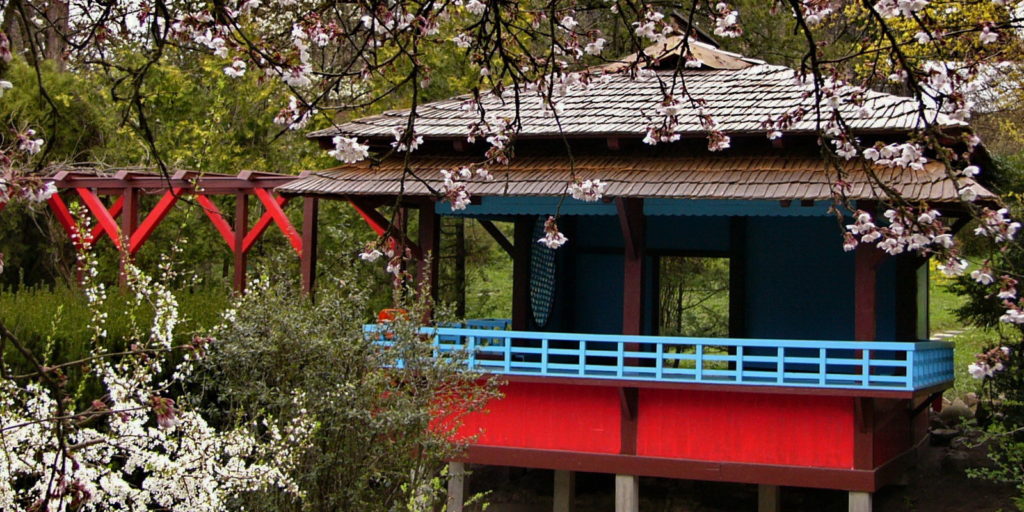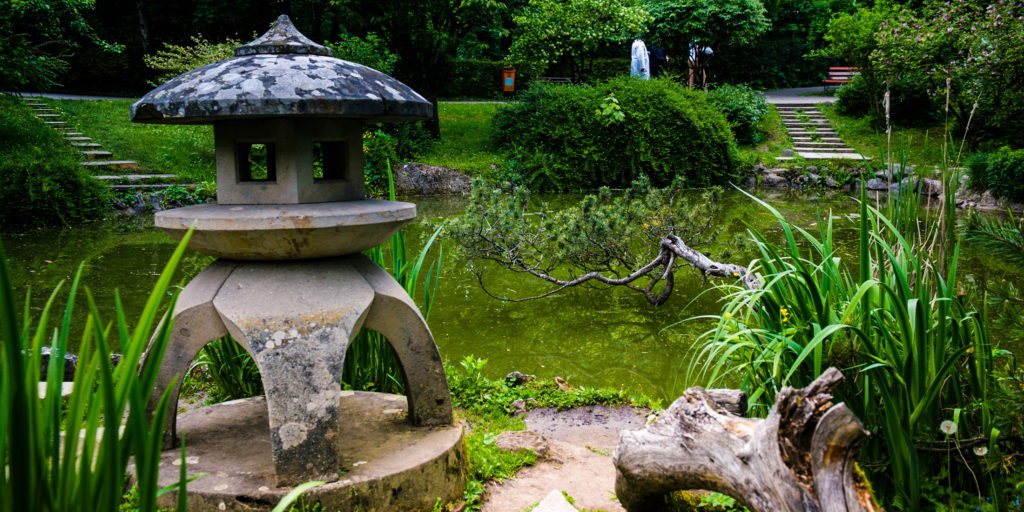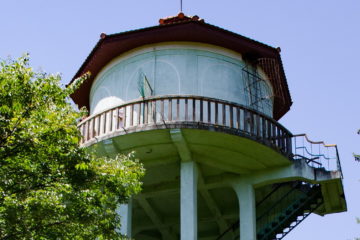Le jardin japonais

Ce jardin a été conçu par Alexandru Borza dans un style traditionnel intermédiaire gyō nō niwa. Le point central du jardin japonais est salon de thé (ou un pavillon), construite sur un petit lac et couverte de la belle glycine (Wisteria sinensis). Les éléments d`architecture spécifique sont nombreux : deux petites chutes d`eau, un pont en pierre qui conduit vers une île, un pont courbé traditionnel japonais, des lanternes en pierre, des pierres comme pavage – qui constituent des chemins qui conduisent dans tout le jardin, une fontaine en pierre et un abri en bois mais aussi une porte sacré torii.

Ce jardin a été conçu par Alexandru Borza dans un style traditionnel intermédiaire gyō nō niwa. Le point central du jardin japonais est salon de thé (ou un pavillon), construite sur un petit lac et couverte de la belle glycine (Wisteria sinensis). Les éléments d`architecture spécifique sont nombreux : deux petites chutes d`eau, un pont en pierre qui conduit vers une île, un pont courbé traditionnel japonais, des lanternes en pierre, des pierres comme pavage – qui constituent des chemins qui conduisent dans tout le jardin, une fontaine en pierre et un abri en bois mais aussi une porte sacré torii.

Ce jardin a été conçu par Alexandru Borza dans un style traditionnel intermédiaire gyō nō niwa. Le point central du jardin japonais est salon de thé (ou un pavillon), construite sur un petit lac et couverte de la belle glycine (Wisteria sinensis). Les éléments d`architecture spécifique sont nombreux : deux petites chutes d`eau, un pont en pierre qui conduit vers une île, un pont courbé traditionnel japonais, des lanternes en pierre, des pierres comme pavage – qui constituent des chemins qui conduisent dans tout le jardin, une fontaine en pierre et un abri en bois mais aussi une porte sacré torii.

It was designed by Alexandru Borza in the intermediary traditional gyō nō niwa style. The central point of the Japanese garden is the teahouse built on a small lake and covered by a beautiful wisteria (Wisteria chinensis). There are many specific architectural features: two small waterfalls, a stone bridge leading to an island, a traditional Japanese curved bridge, stone lanterns, stepping stones – that make up paths which lead you through the garden, a stone fountain and a specific wooden shelter as well as a traditional torii gate.

It was designed by Alexandru Borza in the intermediary traditional gyō nō niwa style. The central point of the Japanese garden is the teahouse built on a small lake and covered by a beautiful wisteria (Wisteria chinensis). There are many specific architectural features: two small waterfalls, a stone bridge leading to an island, a traditional Japanese curved bridge, stone lanterns, stepping stones – that make up paths which lead you through the garden, a stone fountain and a specific wooden shelter as well as a traditional torii gate.

It was designed by Alexandru Borza in the intermediary traditional gyō nō niwa style. The central point of the Japanese garden is the teahouse built on a small lake and covered by a beautiful wisteria (Wisteria chinensis). There are many specific architectural features: two small waterfalls, a stone bridge leading to an island, a traditional Japanese curved bridge, stone lanterns, stepping stones – that make up paths which lead you through the garden, a stone fountain and a specific wooden shelter as well as a traditional torii gate.


